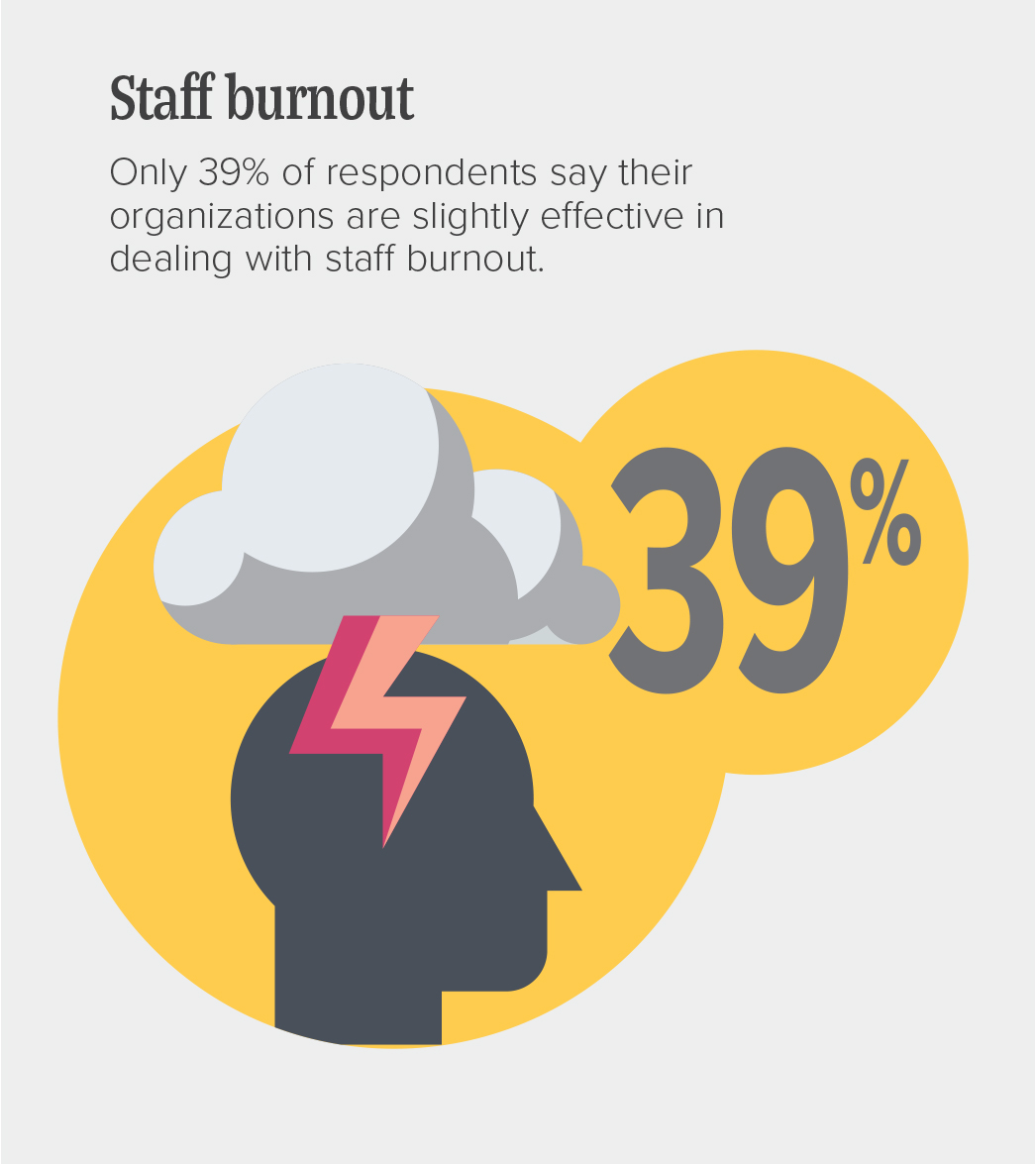Annual Industry Survey: Dealing With Staff Burnout
As healthcare organizations become more cognizant of the need to provide support for their staff, the issue of staff burnout is emerging as one to watch.
Asked to rate their organization’s strategies to deal with staff burnout, just under 40% of respondents to the 2019 Patient Safety & Quality Healthcare Industry Outlook Survey said that their organization is slightly effective at addressing the problem. Only 5% of respondents said they were highly effective at helping staff deal with burnout.

Most respondents said their organizations aren’t doing enough to help burned out employees, with 36% saying their strategies are slightly ineffective and 20% are highly ineffective.
According to a research review published last December in Cureus, burnout has “reached rampant levels among United States healthcare professionals, with over one-half of physicians and one-third of nurses experiencing symptoms. The burnout epidemic is detrimental to patient care and may exacerbate the impending physician shortage.”
Some of the causes of burnout include too many bureaucratic tasks (e.g., charting, paperwork), too much time at work, and the increasing computerization of practice, the review found. There is still some debate over the validity of burnout as an independent diagnosis, and the symptoms of burnout seem to overlap with those of depressive disorders, research has shown.
Suggestions for addressing burnout include involving leadership in addressing the problem, reconsidering how incentives are provided (i.e., performance-based bonuses may lead to overwork and less time spent with patients), encouraging a work-life balance, promoting peer support, providing resources for self-care and mental health, and targeting burnout from the beginning of medical training.
The PSQH survey report analyzes this and other patient safety and quality issues that concern healthcare organizations. Visit here to download the full report.
